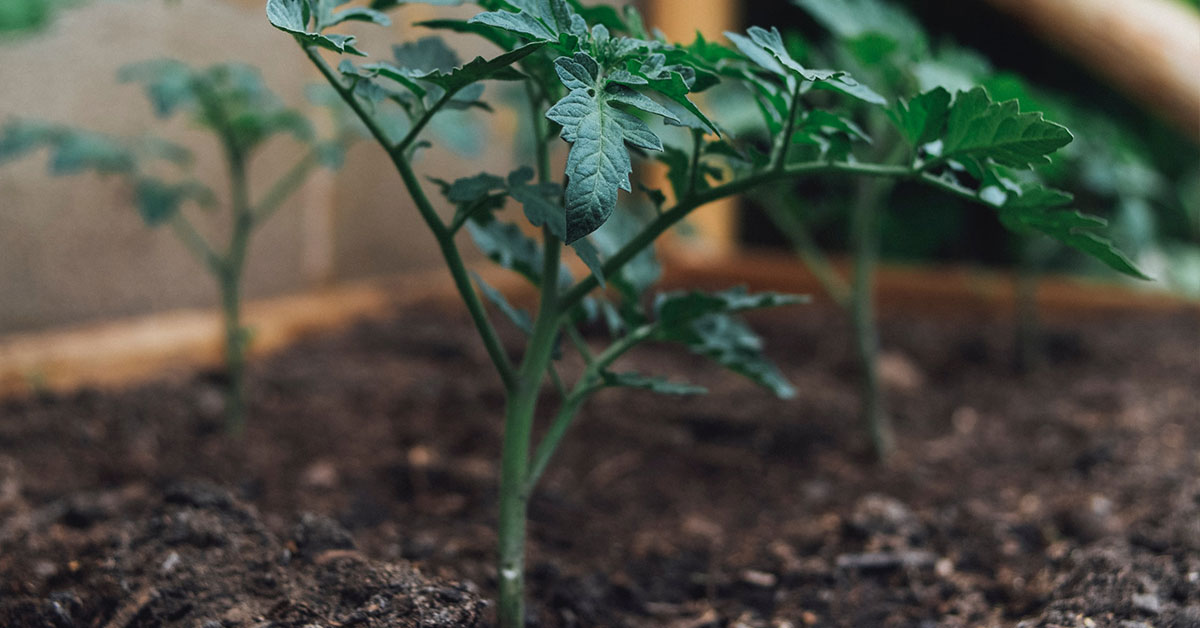USDA hardiness zone 9 covers a range of areas in the United States with an average minimum temperature range of 20 to 30°F (-6 to -1°C). Zone 9’s climate typically has cooler winters and hotter summers. Because of the length of the growing zone, growing tomatoes in zone 9 is super easy.
Keep in mind though that the surprise cold snaps in the spring and fall can put a serious dent in your harvest, be sure to keep an eye on the weather. Keeping your tomato plants safe from overexposure to the sun and ensuring enough water and moisture will be crucial to a successful harvest.
USDA Hardiness Zone 9 Climate
USDA hardiness zone 9 has a warm climate to grow and produce great tomatoes. However, the hot conditions in this region can also present challenges. Tomatoes can develop sunscald, which results in white, leathery patches on the tomato skin, and blossom end rot when calcium is not effectively transported to the fruit. Fungal and bacterial diseases, such as fusarium wilt and verticillium wilt, can thrive in warm and humid conditions.
To mitigate these issues, it’s important to provide adequate shade and moisture to tomato plants during the hottest parts of the day. Regular irrigation or using a drip irrigation system can also help provide the necessary moisture for tomato plants, and mulching can help retain soil moisture and keep soil temperatures cool. See if you have the resources to match your tomato plant with a companion plant to protect it from pests and sun exposure.
When to start tomatoes indoors in zone 9
If you want to get an early start on cultivating tomatoes, begin growing the seeds indoors 4-6 weeks before the final spring frost in your area, regardless of the tomato variety you’re growing. In zone 9, you’ll want to start your tomato plants indoors around January 28th.
You may want to get them going even earlier than that and plant them in a large pot ahead of planting them outdoors, just to give them even more of a head start. To start tomato seeds indoors:
- Select a planting container. Choose a container that is at least 6-8 inches deep, with holes in the bottom for drainage.
- Fill with a seed starter potting soil.
- Plant 2-3 tomato seeds ⅛ inch deep in the soil and cover.
- Water the soil until it is moist but not soggy.
- Place the container in a warm, sunny spot indoors and keep the soil moist.
- When the seedlings reach 2-3 inches tall, thin them out so there is only one seedling per container.
Tomato varieties that do well in zone 9
Growing early-harvest tomatoes is not essential in zone 9, due to the longer growing season (8 to 17 weeks). It is still a worthy practice to protect your plants from surprise freezes and to maximize your season. Some varieties of tomatoes are ready to harvest in under 60 days, so you could double up a harvest if the conditions are right. You have more options in zone 9, so feel free to try a few long-harvest varieties, such as the ones below:
- ‘Aunt Gertie’s Gold’ Tomato – 75-80 Days to Harvest
- ‘Heidi’ Tomato – 90 Days to Harvest
- ‘Opalka’ Tomato – 90 Days to Harvest
- ‘Martino’s Roma’ Tomato – 70-80 Days to Harvest
- ‘Cherokee Purple’ Tomato – 80 Days to Harvest
- ‘Brandywine’ Tomato – 80-100 Days to Harvest
- ‘Tidwell German’ Tomato – 80 Days to Harvest
- ‘Celebrity’ Tomato – 70 Days to Harvest
- ‘Chapman’ Tomato – 80 Days to Harvest
- ‘Gardener’s Delight’ Tomato – 65 Days to Harvests
Hardening off your tomatoes
Hardening off tomatoes that you’ve started indoors before planting outdoors is important to ensure they can thrive in the outdoor environment. When tomatoes are started indoors, they become accustomed to the warm and more stable environment. When planted outdoors, they are exposed to more extreme temperatures, wind, and sun. Hardening off tomatoes helps them slowly adjust to their new environment by exposing them to these elements for an extended period.
The process of hardening off tomatoes begins by slowly introducing them to the outdoors. Start by placing them in a sheltered spot, such as a porch or a partially shaded area, for a few hours each day. Over a week, gradually increase the amount of time they are kept outdoors and the amount of sun they are exposed to. After a week of hardening off, the tomatoes should be ready to move to their final outdoor planting location.
When to plant tomatoes in zone 9
It’s generally safe to plant tomatoes outdoors when there is no risk of frost or freezing temperatures. In most climates, this means waiting until at least late spring or early summer. In zone 9, your final freeze date is around February 28th, but be mindful of your weather forecast. If it seems like you’re in for a late freeze, wait to plant your tomatoes!
When to harvest tomatoes in zone 9
When tomatoes have turned a deep red (or the ripe color of their particular variety) and have no green spots visible, they are ripe and ready to be picked. If there are still green patches on the tomato, it has not yet ripened and should remain on the vine. The ideal way to pick ripe tomatoes is to cup the tomato in your hand and give it a gentle twist- it should come off the vine with ease. When in doubt, you can leave it on the vine an extra couple of days, or harvest the entire branch of tomatoes and allow it to ripen on the vine on your window sill.













